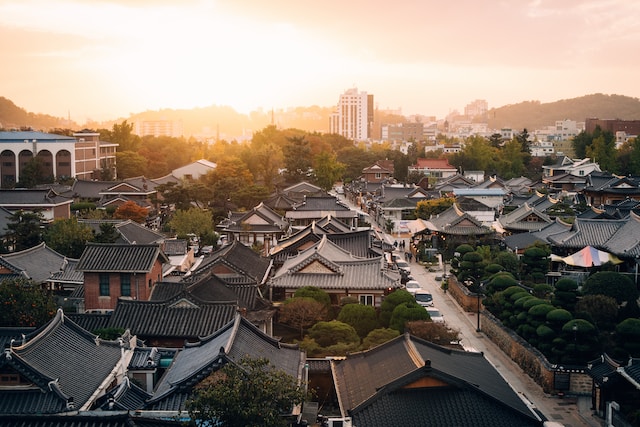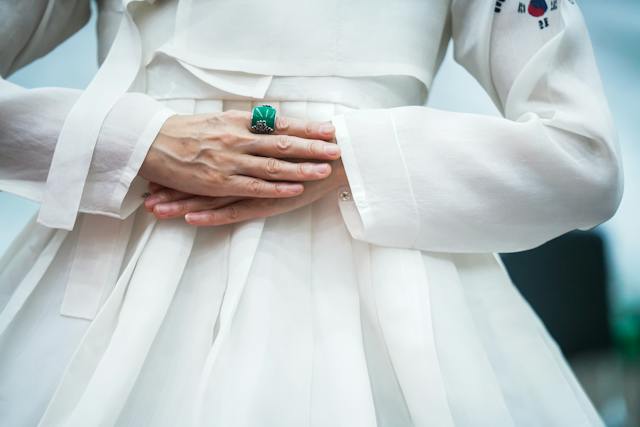Unlike the Western New Year celebrated on January 1st, Seollal follows the lunar calendar, making its arrival a moveable feast that typically falls in late January or early February. In this blog post, we’ll explore not only when this auspicious occasion takes place but also the traditional food and the warm greetings that encapsulate the spirit of the new year.
Korean New Year
Korean New Year is called 설날 (Seollal). The term 설날 is a compound word in Korean that consists of two components: 설 (Seol) and 날 (Nal). Each part of the word contributes to its overall meaning, and together they encapsulate the essence of the Korean New Year.
설 (Seol)
설 refers to the start of a new season or a new period. In the context of 설날, it specifically signifies the beginning of a new lunar year. The concept of 설 is deeply rooted in the traditional East Asian lunar calendar, which is widely used in Korea. It represents the transition from one year to the next based on the lunar cycles, emphasizing the cyclical and nature-driven aspect of time.
날 (Nal)
날 simply means day or date. In the context of 설날, ‘날’ reinforces the idea that 설날 is a specific day on the calendar, a day marked by the second new moon after the winter solstice. It emphasizes the temporal significance of the lunar new year celebration. Therefore, when combined, 설날 essentially translates to “New Year’s Day” or “New Year’s Festival” in English. It encapsulates the idea of the commencement of a new lunar year and the celebration that accompanies this transition.
설날 is not only a time for family gatherings, ancestral rituals, and traditional customs but also a moment to acknowledge the cyclical nature of time and the perpetual renewal that comes with each new year. The word itself reflects the cultural importance of the lunar calendar and the deep connection between nature, time, and the traditions observed during this festive occasion in Korea.
When is Korean New Year (설날)?
Korean New Year is a celebration deeply rooted in lunar rhythms, aligning its date with the second new moon after the winter solstice. This means that the timing of Seollal varies from year to year, placing it in a dynamic position on the calendar. This fluidity adds an air of anticipation, making each Seollal unique and eagerly awaited by families across South Korea.
Korean New Year is one of the most significant and widely celebrated traditional holidays in South Korea. The date of Seollal is determined by the lunar calendar, making it a movable feast that usually falls on the second new moon after the winter solstice. This places Seollal in late January or early February on the Gregorian calendar.
Seollal typically lasts for three days, with the main day of celebration known as “Seollal” itself. The holiday is a time for family reunions, paying respects to ancestors, and engaging in various traditional customs and activities. Koreans also take the opportunity to express well-wishing and gratitude to one another during this festive season.
Korean New Year in 2024
Korean New Year in 2024 is the 10th of February. The New Year public holiday period is from February 9 to February 12.
Korean New Year in 2025
Korean New Year in 2025 is the 29th of January. The New Year public holiday period is from January 28 to January 30.
Korean New Year in 2026
Korean New Year in 2026 is the 17th of February. The New Year public holiday period is from February 15 to February 18.
Korean New Year in 2027
Korean New Year in 2027 is the 7th of February. The New Year public holiday period is from February 6 to February 8.
What to Eat During Korean New Year?
No celebration is complete without a feast, and Seollal is no exception. Among the myriad of dishes enjoyed during this festive time, 떡국 (Tteokguk) stands out as a quintessential Seollal delight. This hearty soup, adorned with thinly sliced rice cakes, symbolizes the cyclical nature of life and is believed to bring good fortune for the year ahead. The act of consuming Tteokguk is not merely a culinary experience but a ritualistic endeavor, as each spoonful signifies the passage of time and the welcoming of a new year.
Beyond Tteokguk, Seollal feasts are characterized by an array of savory and sweet delicacies. Jeon, a variety of Korean pancakes, adds a savory note to the celebration, while Sikhye, a sweet rice drink with pine nuts, provides a refreshing and symbolic conclusion to the meal. These culinary traditions not only showcase the diversity of Korean cuisine but also reflect the cultural significance of sharing food as a means of fostering familial bonds.
Korean traditional food for Korean New Year
- 떡국 (Tteokguk)
- 전 (Jeon)
- 식혜 (Sikhye)
Greeting in Korean New Year
As the clock strikes midnight on Seollal, families come together, not only to share a meal but to engage in the cherished tradition of Sebae. This formal bow, performed by younger family members to their elders, signifies respect and gratitude. Elders, in turn, offer blessings for the upcoming year, creating a moment of warmth and connection that transcends generations. It’s a time-honored practice that beautifully encapsulates the essence of Seollal – a celebration of family, heritage, and the continuous cycle of life.
In the upcoming sections, we will explore these facets of Seollal in greater detail, providing a closer look at the customs, rituals, and profound cultural significance that makes Korean New Year a truly enchanting celebration. So, join us on this journey through the heart of Seollal as we uncover the treasures that make this festive occasion a tapestry of tradition, flavor, and heartfelt connections.
Breakdown of key aspects of Korean New Year
Lunar Calendar Determination
Seollal is based on the lunar calendar, and its date varies each year. The lunar calendar is a traditional East Asian calendar used for marking important holidays, such as Seollal and Chuseok (추석, Korean harvest festival).
Family Reunions
Seollal is a time when families come together to celebrate. Many Koreans travel to their hometowns to be with their extended families during this period. The emphasis on family during Seollal is deeply rooted in Confucian values, which prioritize familial relationships and respect for ancestors.
Ancestral Rites
One of the most important customs during Seollal is the performance of ancestral rites known as “Charye (차례)”. Families gather to pay respects to their ancestors by setting up a ritual table with various offerings such as food, fruits, and other symbolic items. This ritual is believed to bring good fortune and prosperity to the family in the coming year.
Traditional Foods
Special foods are prepared for Seollal, with each dish holding symbolic meaning. Tteokguk, a soup with thinly sliced rice cakes, is a traditional Seollal dish. Eating tteokguk is believed to add a year to one’s age, and it symbolizes the shedding of the old year and welcoming the new one.
New Year’s Bow
Younger family members perform a deep bow known as “sebae (세배)” to their elders as a sign of respect. In return, elders often give blessings and sometimes offer money or other gifts to the younger generation. This custom reinforces the importance of respect and hierarchy in Korean society.
Games and Activities
Various traditional games and activities are enjoyed during Seollal, especially by children. Yutnori (윷놀이), a board game involving four wooden sticks, and jegichagi (제기차기), a game where a small shuttlecock is kicked and kept in the air using any part of the body except the hands, are popular choices.
Seollal is a time of joy, reflection, and connection with cultural roots. It provides Koreans with an opportunity to express gratitude for the past, celebrate the present, and look forward to the future with hope and optimism.
Korean words for Korean New Year
- Korean New Year: 설날 (Seollal)
- Rice cake soup: 떡국 (Tteokguk)
- Korean pancakes: 전 (Jeon)
- Sweet rice drink: 식혜 (Sikhye)
- Ancestral rites: 차례 (Charye)
- New Year’s Bow: 세배 (Sebae)
- Korean traditional game playing with Yut: 윷놀이 (Yutnori)
- Korean traditional game playing with Jegi: 제기차기 (Jegichagi)
I will write more explanations for the Korean traditional game including Yutnori and Jegichagi in the next post. If you want to learn useful Korean phrases, please have a look at my previous post.
In conclusion, the celebration of Seollal, the Korean New Year, unfolds as a tapestry of cultural richness, familial warmth, and delectable traditions. As we’ve explored, the timing of Seollal is intricately linked to the lunar calendar, making it a dynamic and eagerly awaited occasion that falls on the second new moon after the winter solstice.
The culinary delights associated with Seollal are a feast for the senses, with Tteokguk taking center stage. This symbolic dish, featuring thinly sliced rice cakes in a hearty soup, not only tantalizes the taste buds but also encapsulates the essence of bidding farewell to the old and embracing the new. The broader culinary traditions, including Jeon and Sikhye, add layers of flavor and cultural significance to the festive table, making Seollal a celebration of both abundance and symbolism.
As the clock strikes midnight, the cherished tradition of Sebae takes center stage. The deep bowing of younger family members to their elders is a poignant gesture of respect and gratitude, fostering connections that bridge generations. The exchange of blessings and well-wishes during this ritual reinforces the importance of family ties and the collective journey through the cycles of time.
Seollal, with its unique blend of temporal symbolism and cultural practices, invites us to reflect on the cyclical nature of life, the importance of family bonds, and the anticipation of new beginnings. From the crackling warmth of family reunions to the savory and sweet notes of traditional cuisine, Seollal paints a vivid picture of Korean culture’s depth and vibrancy.
As we bid farewell to the old lunar year and embrace the new one, let Seollal serve as a reminder that, across cultures, celebrations are not merely markers of time but threads that weave the fabric of our shared human experience. In the heart of Seollal, we find a celebration that transcends borders, inviting us to savor the flavors of tradition, cherish familial bonds, and welcome the promise of a new chapter with open hearts and joyous spirits.


